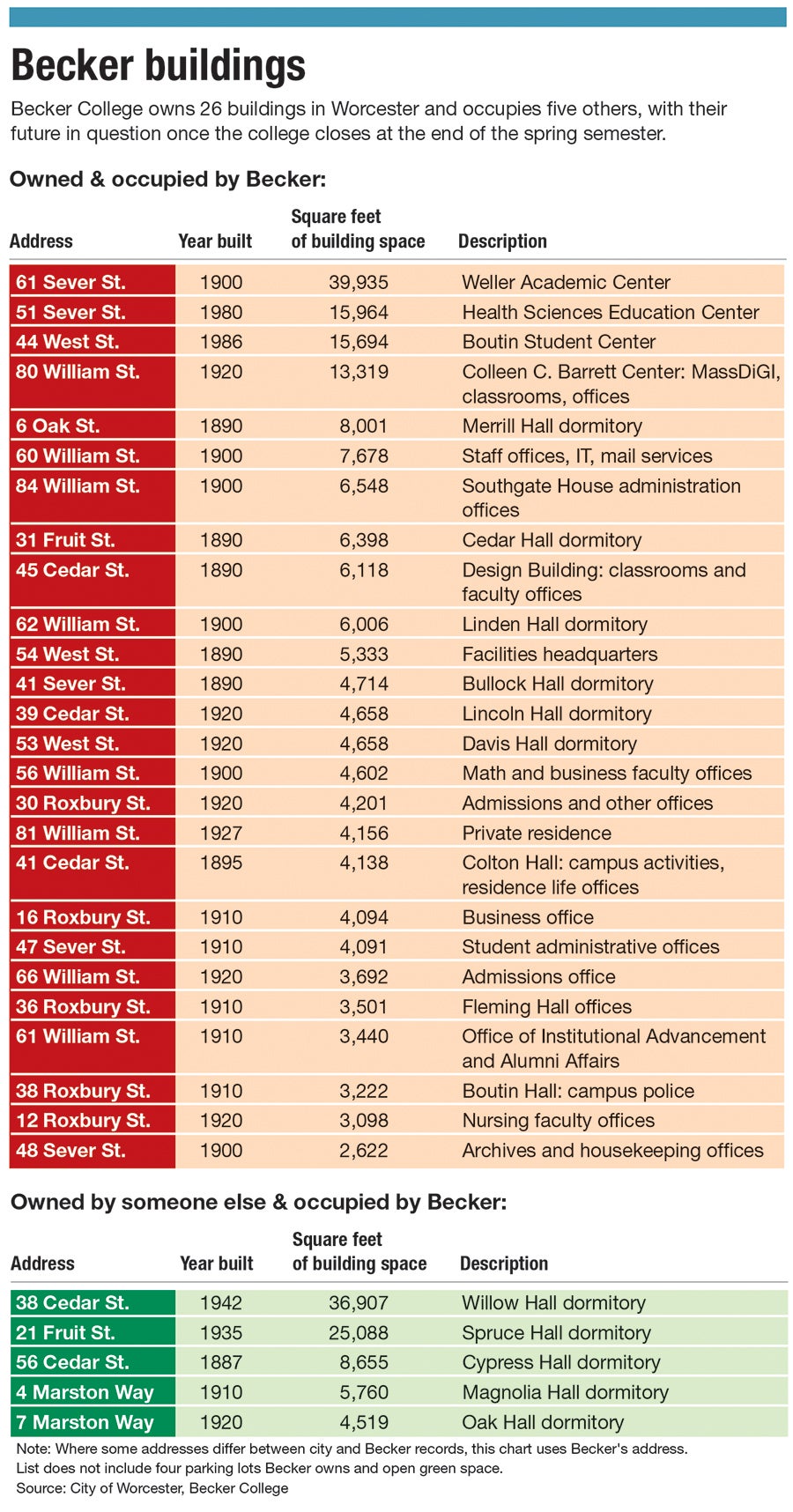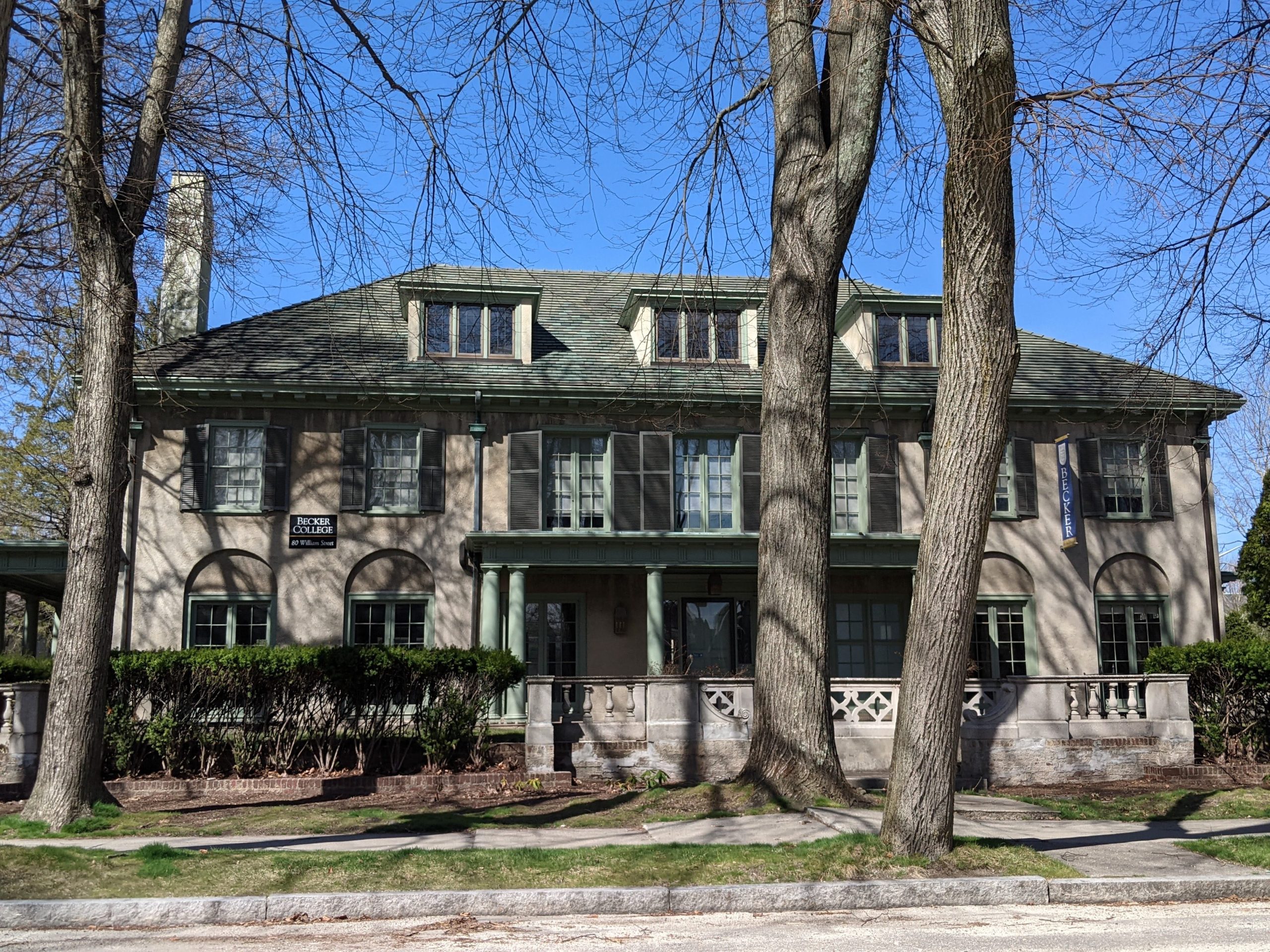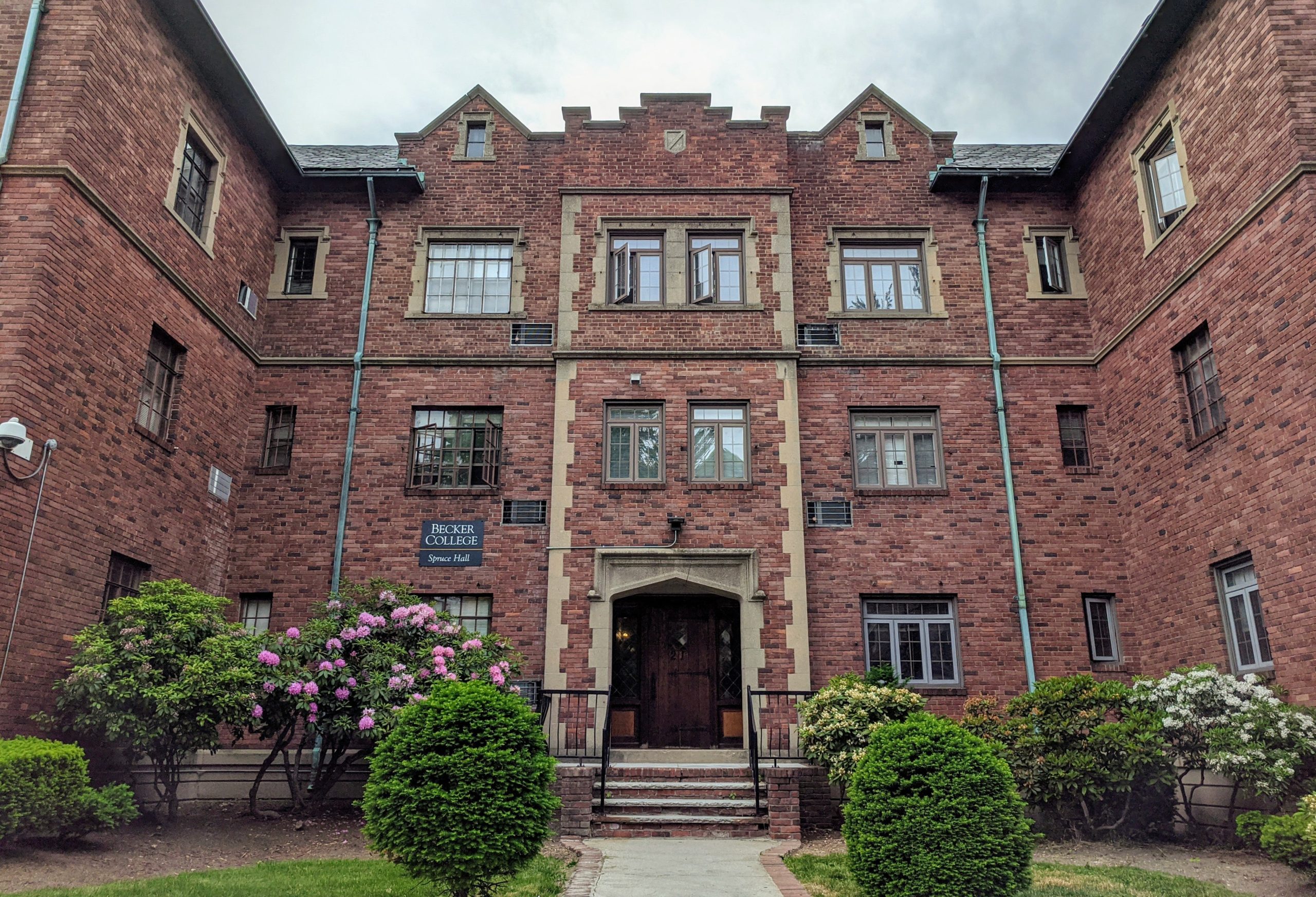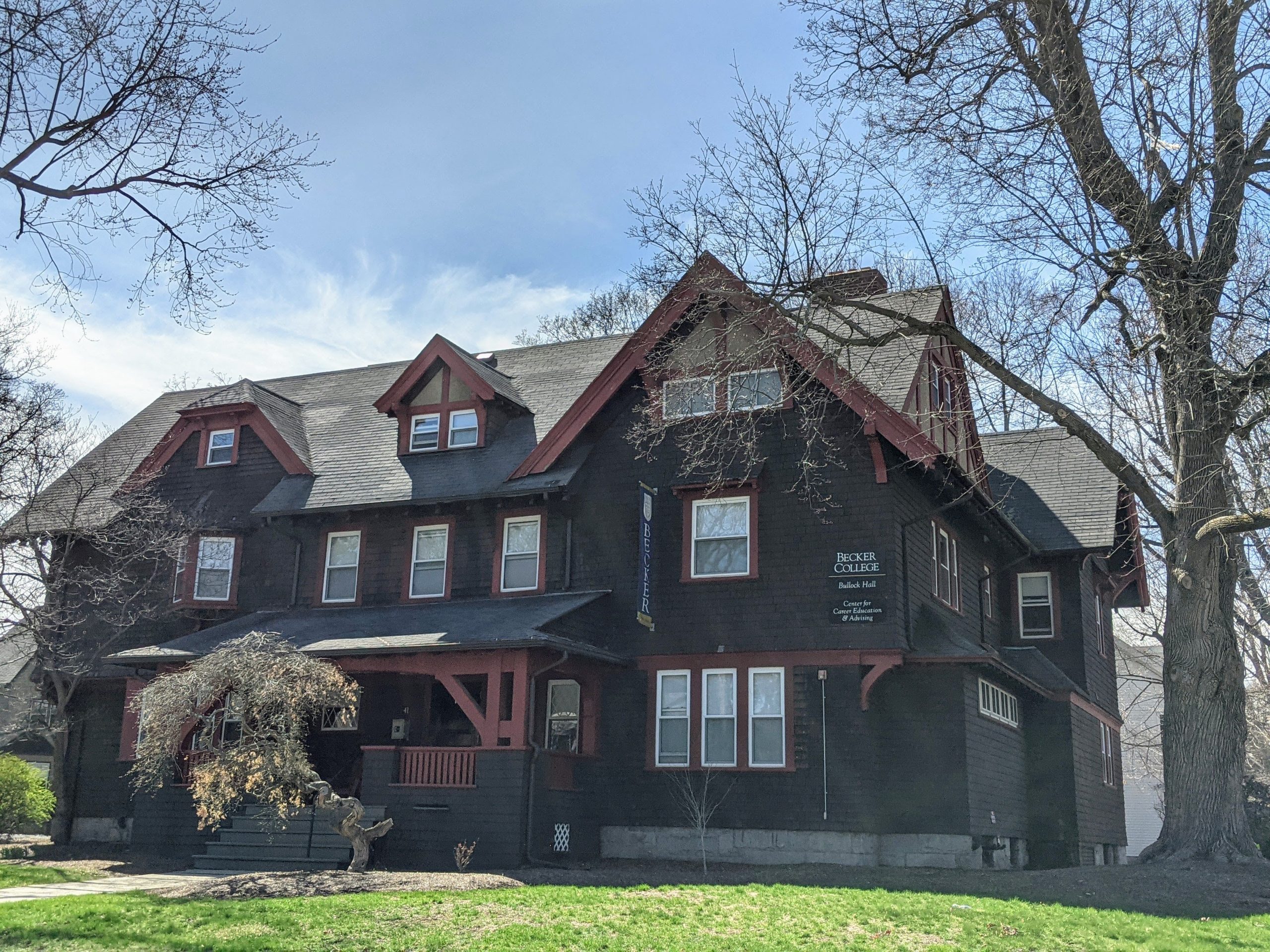Becker College’s Worcester campus so blends into its neighborhood west of downtown someone could pass through and, if it weren’t for the blue Becker banners on a few dozen buildings, barely notice it’s a campus at all.
Get Instant Access to This Article
Subscribe to Worcester Business Journal and get immediate access to all of our subscriber-only content and much more.
- Critical Central Massachusetts business news updated daily.
- Immediate access to all subscriber-only content on our website.
- Bi-weekly print or digital editions of our award-winning publication.
- Special bonus issues like the WBJ Book of Lists.
- Exclusive ticket prize draws for our in-person events.
Click here to purchase a paywall bypass link for this article.
Becker College’s Worcester campus so blends into its neighborhood west of downtown someone could pass through and, if it weren’t for the blue Becker banners on a few dozen buildings, barely notice it’s a campus at all.
But how seamlessly Becker’s roster of late 19th-century and early 20th-century buildings fit amid the blocks of shaded streets just off Elm Park puts pressure on Worcester and Becker to ensure the buildings find new useful life after the school closes after the spring semester.
“They are extremely important properties in the city,” said Deborah Packard, the executive director of Preservation Worcester, an advocacy group for historic preservation.
Fortunately for the city, the layout of the Becker campus – lots of small buildings spread across the neighborhood’s street grid – could make it far easier to redevelop, particularly if it were redeveloped piecemeal, said Mike Jacobs, a principal with the Worcester real estate firm NAI Glickman Kovago & Jacobs.

Jacobs said he can foresee a mix of uses, including other Worcester schools taking advantage of additional space, but particularly housing at a time when prices are fast-rising.
“There’s such a demand for housing in the city right now,” he said.
Home prices in Worcester have been spiking for two years, as rising demand has been met with limited supply on the market. In February, the median price of a single-family home in Worcester was $300,000, an increase of 21% from February 2021, according to the Peabody real estate data firm The Warren Group.
A colorful history
Many of Becker’s buildings were constructed during Worcester’s industrial heyday, when the city’s wealthy built homes west of downtown.

Levi Lincoln Jr., a governor and congressman, once lived in an Italianate home on Elm Street. John Woodman Higgins, a businessman for whom the former Higgins Armory is named, lived at a classical revival home at 80 William St., which was later Clark University’s presidential residence and is now home to Becker’s Colleen Barrett Center.
Today, much of the neighborhood forms the Lincoln Estate–Elm Park National Register District, which includes 17 Becker buildings. Becker’s campus provides a historic tour of Worcester’s Queen Anne, Victorian, classical revival, colonial and other architectural gems.
“How Becker integrated their campus with that architecture is just so important,” said Katie Crockett, the president of the Worcester architecture firm Lamoureux Pagano. “Reimagining those buildings for their campus is such a gift to the city.”
The challenge now – for Becker, the city and those drawn to great architecture – will be to find new uses for the 26 buildings Becker owns and the five others it occupies.
Becker said in a statement it was too soon to discuss plans for its campus buildings after its closure. The college, which traces its history back to 1784 when a predecessor, Leicester Academy, was founded, provides an opportunity for historic reuse that has otherwise sometimes eluded Worcester.
In notable losses for preservationists, the former Mount Carmel and Notre Dame churches were demolished in the past three years, both having suffered structural damage and being far more difficult and costly for finding new uses.
But other buildings in the city notable for their old architecture have or are being preserved, including the former Worcester County Courthouse in Lincoln Square, parts of which date to the 1800s and where the first of more than 100 apartments opened this year.
The former Boys Club, which dates to 1889 but has suffered visible exterior wear after 15 years of vacancy, is proposed for 95 units of apartments. The Commerce Building, built in 1906 on Main St., is planned to be converted from offices into 312 apartments.
Finding new uses again
In Becker’s case, its buildings benefit from the context of their original uses.
Aside from their college use today, they can be indistinguishable from their neighboring buildings not part of the campus, making it easier for a potential piece-by-piece redevelopment.
“It’s all doable, but at a high cost,” said Russ Haims, the president of Hampton Properties, which has been fixing up grand old homes in Becker’s neighborhood for over a decade and rents out apartments in more than a dozen.

Renovating the old buildings can often be very costly, Haims said. “I look past the current condition, and I visualize what they could be,” he said.
Haims said he’d be interested in Becker’s dorm buildings if they become available, and said much of what comes of the campus will depend on demand.
Jacobs said he can envision nearby colleges taking some buildings and others being converted into residential use or even lab space. Traditional office use isn’t as likely, particularly with high vacancy rates in the city, he said.
The campus sits just outside a federal opportunity zone, which would have provided developers an extra incentive, but historic tax credits are likely to be available.
“Logic would dictate that some of the Worcester schools would find enticement with some of this real estate,” Jacobs said.
If at least some of Becker’s Worcester buildings were to still be used for college purposes, there would seem to be some potential with at least one neighbor: Worcester Polytechnic Institute.
WPI has already offered to host the Massachusetts Digital Games Institute, a center known as MassDiGI located on the Becker campus. WPI has a fast-growing enrollment, and it already utilizes many former homes for offices on the south end of its campus closest to Becker. WPI didn’t comment on whether it’s looking at potential uses at Becker.

Clark University, which is taking Becker’s celebrated video game design program, has committed to keeping the program in Becker buildings for the upcoming school year. It said in a statement Clark said it is focused on meeting supporting the first year of the new program and hasn’t had any conversations beyond that.
Worcester City Manager Edward Augustus said in a statement the city intends to be active in discussing Becker’s plans for its properties when the time is right. City Councilor Candy Mero-Carlson, who chairs the council’s economic development committee, said keeping Becker’s old buildings will be important for the neighborhood.
“I don’t think we should just let anything go in there,” she said of a goal of preservation. “I, for one, don’t want to lose those buildings.”
Preservation Worcester is also concerned, Packard said. The group can help match properties with developers.
Packard expressed optimism in the campus’s future. That’s due to both their history and the fact that the building's old age requires a city demolition delay meant to spur an owner to renovate instead of knock down the structure.
“The neighborhood lends itself to a lot of types of reuses,” Packard said.
Leicester will face the same challenge, with roughly two dozen buildings on a second, smaller Becker campus in town. Town Administrator David Genereux said the town has notified the college of its potential interest – Town Hall stands immediately adjacent to campus on the Town Common – but said further discussions are premature.
“There will be discussions in the coming months about possibilities of transferring property to the town, the most important of which is the Town Common,” Genereux said.

